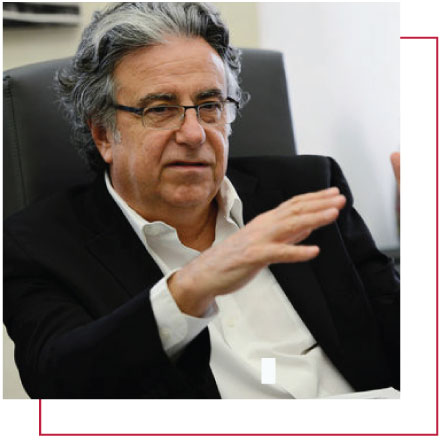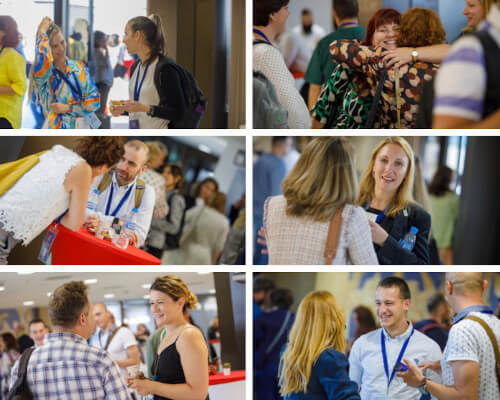 This is a summary of the Capital Interview with Architect Lee Skolnick featured March 11/12.
This is a summary of the Capital Interview with Architect Lee Skolnick featured March 11/12.
– The American architectural team behind the first children’s museum Muzeiko will also design the interior of the children’s ward in the hospital.
– Community buildings should work to improve the overall cultural and urban environment, not just represent someone’s taste, the American architect says.
“All human beings learn through stories. That’s how I see architecture – our job is to help people understand and live beneficially. Creating a narrative from which to work ensures that people connect with the values and messages that characterize an environment. And I’m not talking about a “once-upon-a-time” and “they-lived-happily-ever-after” kind of fairytale but a story that lies at the essence of any given situation.”
For the second time around the architect Lee Skolnick will work in Bulgaria and once again he’ll design through the medium of telling stories. Three years ago, he designed the first children’s museum in the country – “Muzeiko”. Now he’s coming back for a sequel. This time he’ll help transform the children’s ward in Pirogov Hospital using the museum as a model and inspiration. There is already an architectural overhaul going on in the hospital, but with Skolnick’s help, America for Bulgaria Foundation and supporting sponsors will provide the child-friendly elements for the ward’s character and identity.
“I think that a good public building can push the transformation of an environment. You have to start somewhere”, Skolnick told “Capital”. Several years ago, his architecture studio LHSA+DP won the contest among 13 international companies for building the children’s museum in Sofia. After a sleepless night caused by the time zone difference and contemplating the mountainous terrain around the city, he invented Muzeiko’s theme – “the little mountains”. Then the studio started researching traditional Bulgarian crafts. They traveled around the country and came to the conclusion that embroidery, ceramics, and wood-carving are some of the most typical artisanal of the region. “Then I had a thought – wouldn’t it be better if, instead of doing an anonymous “international” modern building which you can find anywhere else, we could turn it into a special one reflective of and specific for Bulgaria,” Skolnick recalls. This gave birth to the idea that each “little mountain” intersecting the museum’s main volume should include motifs inspired by these three crafts. The main body and skin of the building is made of glass. “This was a very conscious decision for transparency. Not only literally, but also metaphorically – we wanted to break the chains of the sentiments and messages of the past with their huge, heavy buildings and with the idea that things are happening in secret and some anonymous and outside power controls one’s life. We wanted to make a statement that communicates that “you control your own life and you can see everything that happens…nothing is hidden,” said the American architect.
Lee Skolnick has designed public buildings for decades, while museums and children’s centers are a main focus of his work. About his style of working on such projects, he says, “We don’t just spring out of nowhere saying this is how the building is going to look, I hope you like it.” Instead, the studio gathers as much information as possible before the actual design process begins. They look for the history and the unique story embedded in the specific condition itself. “It doesn’t happen fast, but once you find it it’s much easier to develop the design. During the whole rest of the process of development, you know what kind of message you want to deliver. I don’t need to wonder whether some room has to be blue, yellow or green – everything decision has its own appropriate reason behind it. You can then proceed to make quick decisions which aren’t accidental or a question of personal taste or desire. Whether the ceiling’s plaster, where the glass should go or what the door handle should be – everything is integrally connected to the essence of the project,” said Skolnick.
Muzeiko’s message is transparency, democracy and celebrating Bulgarian culture, claims the architect. In Pirogov the inspiration comes from the theme of “Little Heroes”. While listening to Skolnick’s words, you get the idea that it’s not just about beautiful murals painted on the walls. “We want to connect the heroes from children’s fairytales, superheroes and real life heroes – policemen, firefighters, teachers, scientists, oceanographers,” he says. The actual repairs consist of repainting the walls and installing new finishes and surfaces, but interactive elements will also be included, similar to some of those featured at Muzeiko. “We’re working with IKEA to select and supply the furniture so that we create a homey, modern and pleasant child-friendly atmosphere, rather than an institutional one,” the architects adds.
The aim of the repairs isn’t simply a clinical one. Instead, the studio wants to create a space where children and their families will feel more comfortable and calmer. “Now, when you’re admitted in a hospital, you feel as though everyone else knows what is going to happen with you, but you’re still the only one who doesn’t know what to expect. This disturbs people and creates fear and anxiety, especially among children because they have no idea what is happening,” Skolnick says. His studio is working on two similar hospital projects in New York. The architects aim to reduce the stress children face. “One of the ways to do that is to distract them from the fear and worry and give them something different to focus on,” explains the American architect.
But whether a certain design is successful isn’t measured just by making patients feel more cheerful. “We’re looking for measurable results,” says Skolnick. “At the hospital, this would mean that we ask ourselves questions like: are we reducing the stay of the patients because the environment helps the healing process?” This method is called “evidence design” and it seeks to measure the positive or negative influence according to quantifiable results. In the US, this method is being used more and more because it’s clinically effective and secondly, because hospitals are in fierce competition and they’re looking for ways to attract both patients and good doctors. “Pirogov also has excellent doctors. Everyone who goes there says that the level of medical care is very high, but that the environment is sorely in need of improvement. That’s why we’re here,” says Lee Skolnick.
Lee Skolnick has dedicated a lot of his work to public buildings. “I love this type of project because you get to work with a lot of smart people who want to do something good for society and support creativity,” he explains. One reason he doesn’t work with big private investors is that “they care about creativity only if it will sell more flats or offices.” His experience with museums is exactly the opposite – people care about the quality.
“Winston Churchill said: “We shape buildings, thereafter they shape us.” It’s true that architects, engineers, politicians, and private capital often decide how buildings will look but afterwards these same buildings influence our lives. But we’re living and developing to a large extent based on the environment we live in,” Skolnick said. This shouldn’t happen by accident. It should be done carefully and sensitively and as a reflection of the beliefs of a certain place or people. Unfortunately, this doesn’t happen often enough.
“Many buildings appear the way they do just because they can be built cheaply or because someone liked a certain style, and they’re not connected to anything.” He thinks that the traditional phenomenon that architecture mirrors the culture of each specific society is gradually fading away. “Usually, you go to Athens to see the Parthenon or to Rome to see the Pantheon,” Skolnick states as an example. That experience tells you so much about the cultures from which these buildings emerged. In modern architecture, things are a little different. “You go to Dubai, China or even Sofia and all you can see is the same type of modern buildings,” the architect states.
To a certain extent, this accurately represents today’s society because through global communications technology people have the chance to see and want different things from around the world without them being connected to their culture, geography or climate. However, Skolnick stands against this movement in architecture. “I am for buildings and cities which represent the particular culture and environment, it’s much more exciting, fulfilling and meaningful,” he says. In his words, this is the main reason why architecture is a job to be undertaken for your whole life. “Because you’re engaged in a sustained battle for what you think is right,” concludes the architect.
*Project of “Economedia” (publisher of Capital) receives financial support by America for Bulgaria Foundation

